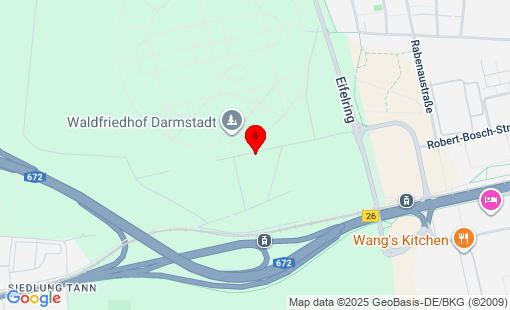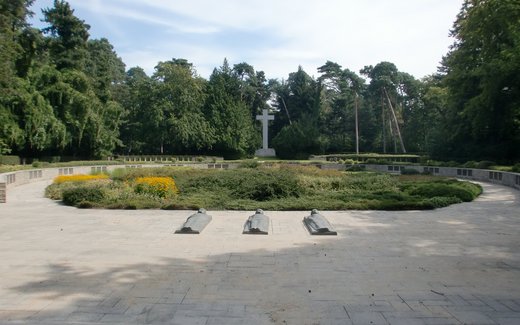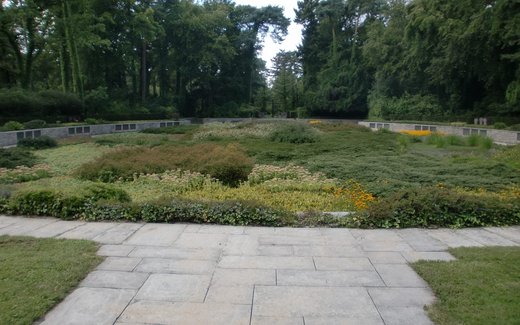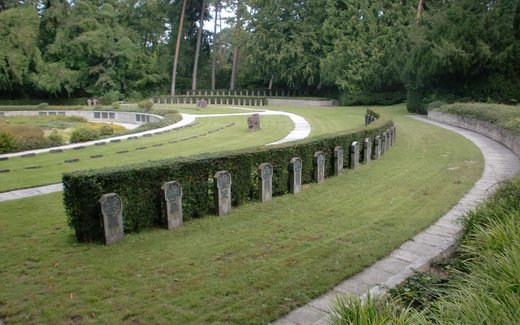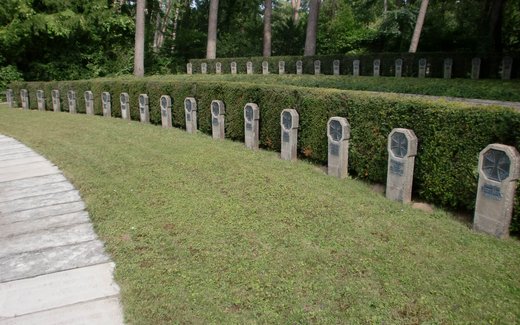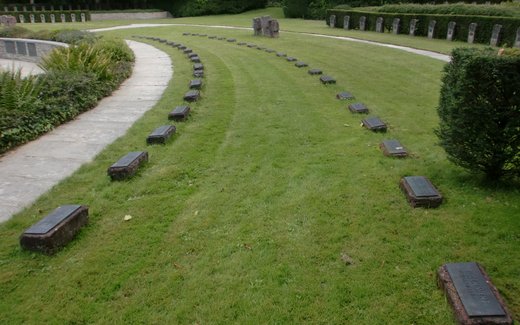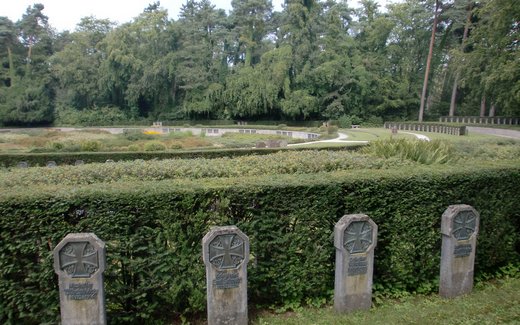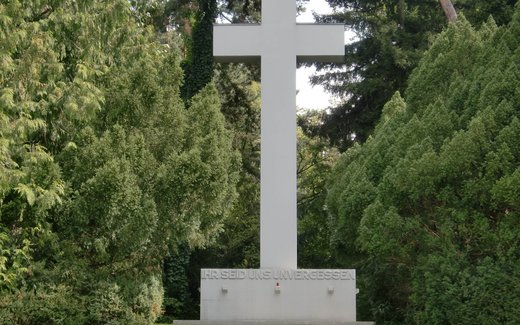This text is a result of the research project of the State Association of Hesse
"On the historical reappraisal of selected war cemeteries in Hesse":
http://www.volksbund.de/hessen/projekte0/forschungsprojekt0.html
At the beginning of the First World War in 1914, the forest cemetery south of Darmstadt was
of Darmstadt was established. In the meantime, a total of several thousand dead
of the First and Second World Wars have found their final resting place there - including in
including soldiers who died in local prisoner of war camps and hospitals as well as civilian
civilian victims of the air raids on Darmstadt in the early 1940s.
Creation of the war cemetery
Since the outbreak of the First World War, German soldiers who died in local military
German as well as French, Russian, Belgian, English, US, Italian, Italian and
english, US, Italian and Serbian soldiers have been buried here. A
However, the majority of the graves were dug up again in 1922/23 and the
the mortal remains were transferred to their respective home countries. The
remaining Russian and Serbian graves were moved to the cemetery L3f, which still exists today
cemetery L3f, which still exists today.
Due to a lack of space, the first fallen German soldiers were moved to a central
central roundel in the cemetery (R8), the so-called "Grove of Honor",
transferred. By 1919, around 400 fallen soldiers were buried here. In
1932, the traffic circle was extended to include a huge memorial cross commemorating
memorial to all German soldiers who died as prisoners of war
prisoners of war. It bears the inscription: "You are unforgotten to us" and still forms the
the focal point of the central complex. At the end of the 1950s, the traffic circle was
renovated and has since served as a memorial to all victims of the war.
Victims of the Darmstadt "Night of Fire"
Between 1940 and 1944, Darmstadt was bombed a total of 36 times by Allied air
Bombed by Allied air forces. During a major attack by the Royal Air Force on the night of
september 12, 1944, almost the entire old town and city center of Darmstadt was
was destroyed; around 12,000 people died.
The majority of the civilian victims were buried in a mass grave in the center of the
Rondell and in a nearby collective grave in the Waldfriedhof cemetery.
The exact number can no longer be reconstructed, as the majority of the bodies can no longer be identified
Of the bodies could no longer be identified.
Today, bronze plaques with almost 4,000 names on the lower wall of the
Wall of the traffic circle commemorate the citizens of Darmstadt who lost their lives in the air raid
Lost their lives in the air raid. In the arch around the collective grave of the bombing victims are
the graves of the deceased soldiers of the First World War, there are also almost
world War I, there are also almost 300 graves of fallen Wehrmacht soldiers from the Second
World War II.
Foreign workers in Darmstadt
Almost hidden behind the traffic circle, at the back of the cemetery,
there are several burial plots for forced laborers,
who lost their lives in Darmstadt and the surrounding area during the war from 1939 to 1945
darmstadt and the surrounding area. The victims came from Belgium, Estonia, England, France,
Ukraine, Romania, the former Yugoslavia, Italy, Lithuania, Russia, Switzerland and Poland
Switzerland and Poland.
A stone was placed on the front collective grave (R9e) as a memorial
erected. It simply bears the inscription "To the dead of the war
1939-1945". On another, more remote, collective grave (R14f) there is
a bronze plaque set into the ground which reads:
"In memory of the Russian dead of the Second World War 1939-1945".
More detailed information about the circumstances of the lives and deaths of the deceased is
not yet apparent.
With the beginning of the Second World War, the conscription of soldiers meant that
Labor became scarce in the German Reich. To make up for the losses
Prisoners of war, and later civilians, from the defeated countries back to Germany
Germany. There they had to work in industry, agriculture,
in private households and other areas.
The Darmstadt-based company Merck also employed foreign workers from 1939 onwards
Foreign workers. According to its own information, the chemical and pharmaceutical factory
Pharmaceutical factory until its destruction in December 1944, a total of 1654 employees
from abroad, including from Italy, France, Poland, Russia and Holland,
Russia and Holland.
Some returned to their home countries after the end of the war, but some died
died while working in Darmstadt and were buried anonymously,
while others were given a marked grave in the Waldfriedhof cemetery.
One of them was the Pole Jan Labenski. He did not come to Germany as a prisoner of war
to Germany, but officially as a "civilian worker". In March/April 1945
uS troops occupied Darmstadt. According to official information
Jan Labenski committed "suicide by hanging" two months later, on May 21 - ten days after his
Days after his 26th birthday. He was buried at the Waldfriedhof cemetery in a grave marked
Grave marked "R 14 f 57".
Germany
Darmstadt - Waldfriedhof
Total Occupation: 7.905 fatalities
Total Occupation: 7.905 fatalities
Contact
